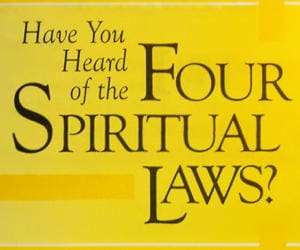A recent report claims that the Shroud of Turin has now been dated to with 200 years, plus or minus, of the time of Christ. Many believers regard the shroud as a legitimate relic from the time of Christ, espousing the view that the image on the shroud was created supernaturally during Jesus’ resurrection from the dead. The shroud is something that people often look to as affirmation of their faith in Christ. They see it as a form of evidence that Jesus existed and was raised from the dead.
I am not one of those people.
To be sure, Jesus Christ did rise bodily from the dead, never to die again. The scripture’s accounts of him are accurate, faithful, and true. It is enough for me that the scripture testifies to these things. It gives us eyewitness accounts of the risen Jesus under circumstances that can only be properly and historically judged as Jesus risen from the dead. But sometimes, people want more than what the scripture says because the scripture is not enough for them. Even Jesus remarked on this when he quoted Abraham saying, “If they do not listen to Moses and the Prophets, they will not be persuaded even if someone rises from the dead” (Luke 16:31).
Ultimately I don’t think the Shroud of Turin matters and I don’t think it does anything constructive for our faith.
If the shroud is not genuine and we believe it to be so, are we not placing our faith in evidence which is not true? Christianity is a rational religion of evidences. We do not need false evidences to substantiate the Bible’s claims about Christ. If the shroud is real then it can be evidence of the resurrection, but like all so called “holy relics” it gains a life of its own and becomes an object of devotion instead of pointing us to the real, living Jesus. In fact, I believe that so called relics like this actually turn our attention away from the scriptures instead of trusting its testimony.
From my perspective I don’t think the shroud matters and I have a significant reason why.
The shroud does not fit with the biblical account of Jesus’ burial. The scripture is our supreme authority about Jesus. The account of Jesus’ burial precludes the shroud from being a genuine article. Look carefully: “After these things Joseph of Arimathea, being a disciple of Jesus, but a secret one for fear of the Jews, asked Pilate that he might take away the body of Jesus; and Pilate granted permission. So he came and took away His body. Nicodemus, who had first come to Him by night, also came, bringing a mixture of myrrh and aloes, about a hundred pounds weight. So they took the body of Jesus and bound it in linen wrappings with the spices, as is the burial custom of the Jews” (John 19:38-40).
Anyone who has seen pictures of the Shroud of Turin knows that the shroud is a long single piece of cloth that a body was laid on, then folded over to cover the top of the body. This contradicts what we know about Jesus’ burial from the scripture and Jewish practices of the era. Note in the passage above that John says the body was wrapped in linen wrappings. The common practice of the time was to wrap a body in linen strips, winding around the body all the way up to the neck, the head was then covered with a separate piece of cloth. The one hundreds pounds of spices would have turned the wrappings into a stiff shell—moveable, but still stiff after three days in the tomb. Now, when Jesus rose from the dead he did not unwrap himself. His arms and hands would have been bound in the linen wrappings. Instead, his body was transformed and he rose through the wrappings. Thus, when Peter and John went to the tomb that Sunday morning and looked in they essentially saw an empty linen shell (John 20:1-8). The shell may have collapsed, or it may have retained its shape, we don’t know. But the wrappings would have otherwise been undisturbed, in the shape of the body, meaning that they remained in a “wrapped” state signifying that no one had unwrapped the body for it to be removed. The only conclusion left is that Jesus rose through the wrappings.
What we know about the resurrection of Jesus is contradictory to what is represented in the shroud. When it comes down to considering evidences for Jesus’ resurrection, anything which contradicts the scripture, no matter how well intentioned, should be looked upon as suspect and discarded. The Shroud of Turin doesn’t match the testimony of scripture. Thus, we can safely discard it at the very least as a piece of art, but not as the genuine burial wrappings of the risen Jesus. It adds nothing to our faith. In fact, the controversy surrounding it only serves to distract people from the genuine article of our faith, the risen Jesus.
